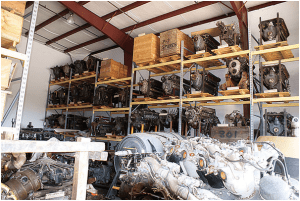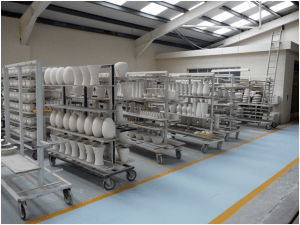Well thought out, operated and maintained storage is a vital component of a successful warehouse. Good, secure racking is key not only to keep your employees safe and to comply with relevant health and safety regulations, but it can also help a warehouse run more efficiently, ultimately saving money, as well as provide a nicer environment for workers.

However, on the flipside, having damaged, unsafe or insecure racking can at best mean a less efficient warehouse and at worst could result in a serious accident.
Common safety issues
Key issues to look out for when it comes to racking security are as follows:
– Racking and longspan shelving that isn’t properly secured to the floor. Ideally, racking should have base plates for each column, secured with bolts that can withstand the loads each rack will be taking.
– Load rating not displayed prominently. Each rack will have a load it must not exceed if it is to remain safe. However, if this is not shown on the rack as well as communicated to employees, it is very easy to overload a rack, and an overloaded rack is a dangerous one.
– Damaged racks. Any rack that isn’t properly aligned, secured or out of plumb is damaged. It is also important that racks are kept clear from obstruction so that they can be inspected properly to make sure they aren’t buckling or broken.

Rack security checklist
Regularly checking that racks and longspan shelving are safe and secure is a great way to ensure any problems are picked up at the earliest opportunity. Some may be fixable in-house, but at other times, the help of an expert may be needed, as this article shows.
It is important to thoroughly check the following each month:
– Alignment
– Levels
– Plumb
– Bumpers
– Guards
– Reinforcements
– Connections
Staff training
It is also vital that all employees understand the importance of rack safety. Make sure they all know the kind of racks you have, as well as the loads and capacity limits for each. It is also very important that only trained operators use any powered equipment to place items on the racks. Employees should also be made aware that they should never step or climb on the racks unless absolutely necessary. Finally, they should be trained to regularly check racks for damage.



